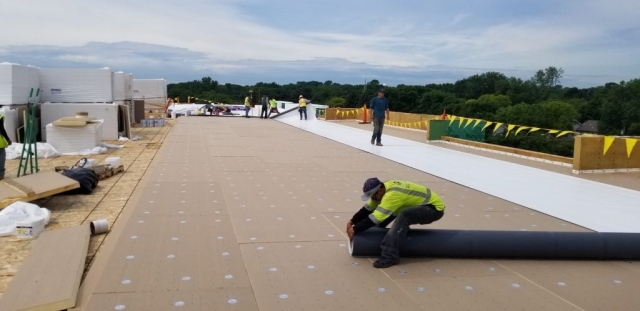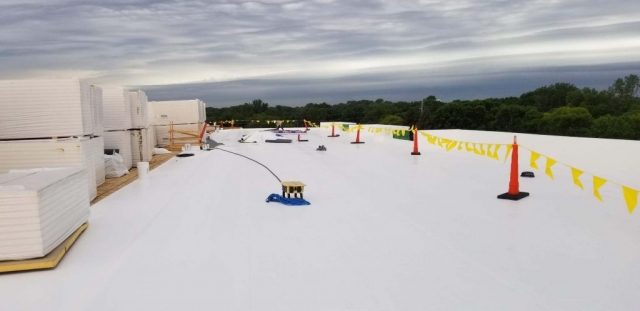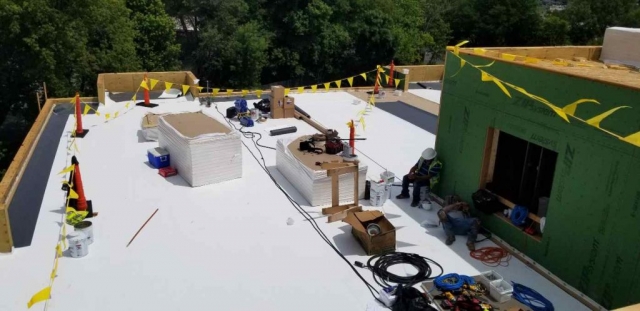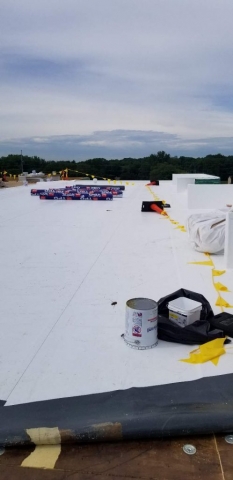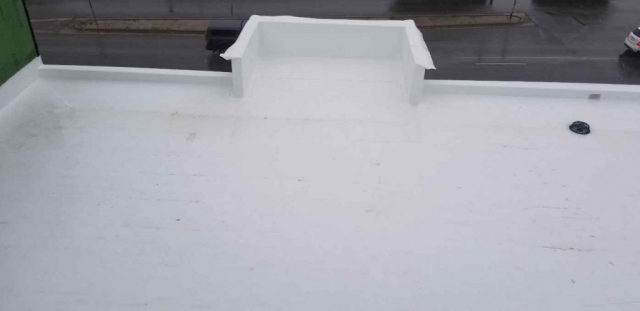Singly-ply flat roofing has grown more popular over that last 30 years due to competitive pricing, flexibility and ease of installation.
EPDM- EPDM is a rubber material with principal components consisting of ethylene and propylene compounds. When a small amount of diene is added to the mix a flexible rubber matrix is formed. Reinforced and unreinforced are both available and commonly used. EPDM membrane thickness ranges from 45 mil to 90 mil. The most common uses are 45 mil and 60 mil. Seams are sealed using either adhesive or tape.
TPO- A constructed combination of thermoplastic poly-olefin, ethylene propylene rubber and singly-ply membranes are what make up the membranes of TPO. They are designed to combine the durability of rubber with proven performance of heat weldable seams, have good flexibility to allow for building movement and are highly resistant to tearing. They are algae resistant, environmentally friendly and safe to install. TPO’s are available in white, light gray and black with thicknesses of 45 mil, 60 mil, 72 mil or 80 mil.
PVC- Polyvinyl Chloride aka PVC has heat weldable seams making its application and look similar to TPO. PVC has been known to be highly resistant to chemicals like acids, bases, grease and restaurant oils. It is available in thickness of 50 mil, 60 mil or 80 mil.
Singly-ply roofing has three standard application processes: Fully adhered, mechanically attached and ballasted which is held in place with river rock or concrete pavers.





